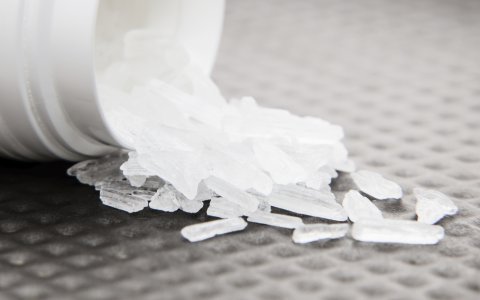Ice use continues to rise, rivals heroin as most injected drug
Crystal methamphetamine use has risen by six per cent among people who inject drugs for the third consecutive year, with just under half of users taking the drug at least once a week, a national Drug Trends survey has found.
The findings are part of the Illicit Drugs Reporting System (IDRS) report, which was unveiled alongside the Ecstasy and Related Drugs Reporting System (EDRS) report at the NDARC Symposium on 12 September.
The IDRS, which surveys people who inject drugs (PWID), shows that 73 per cent of PWID had used crystal meth in the past six months, compared to 67 per cent in 2015.
Crystal meth use by PWID has increased by 34 per cent since 2010, climbing six per cent each year for the past three years.
Frequency of crystal meth use has also increased significantly, with 42 per cent of PWID reporting ‘weekly or more’ use, up nine per cent on 2015 (33%). Crystal meth was cited by 36 per cent of PWID as the drug injected the most often in the past month, just shy of heroin (39%), which tops the list.
By comparison, those surveyed in the EDRS report were less likely to use crystal meth, with just 19 per cent reporting use in the previous six months.
The EDRS surveys psychostimulant users, who are generally younger, more likely to be employed and university educated, and unlikely to have a prison history compared with PWID.
It found 60 per cent of psychostimulant users are taking a very pure form of ecstasy crystals, with a significant proportion of these users bingeing on stimulants for up to 48 hours.
NDARC researchers warn that increased purity and the ease of availability may increase the risk of adverse effects.
The Drug Trends program based at NDARC also monitors online availability of illicit and emerging substances.
The latest data from the Drugs and New Technologies (DNet) project shows that of the top five countries selling drugs online, Australia has by far the highest number of individual sellers per head of population – 4.82 per one million people – compared with other countries such as the US, UK, Netherlands and China.
DNet currently monitors around 18 cryptomarkets, which host multiple drug sellers and provide participants with anonymity via their location on the hidden web. Research suggests that cryptomarkets may be associated with more diverse and exploratory drug use, although not necessarily increased harms.
In Australia, pharmaceuticals are the most commonly sold drug online, followed by MDMA and cannabis.
The latest IDRS bulletin can be accessed HERE.
The latest EDRS bulletin can be accessed HERE.












